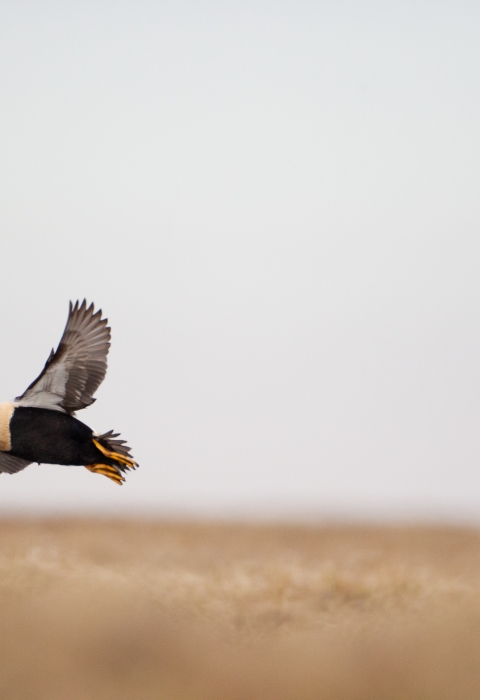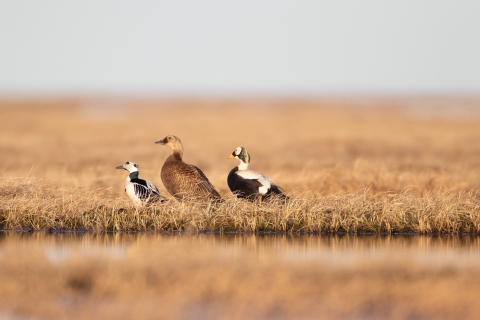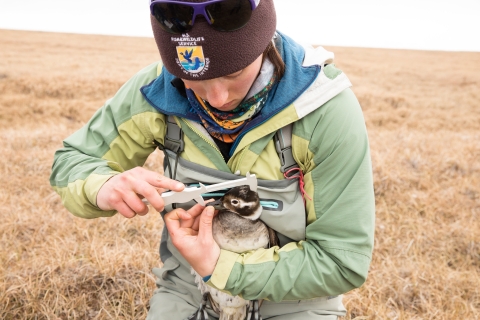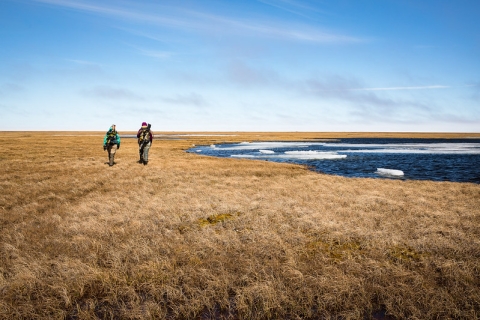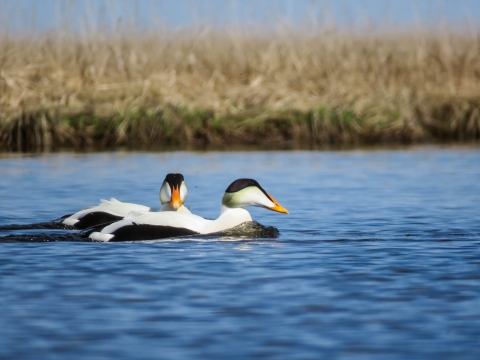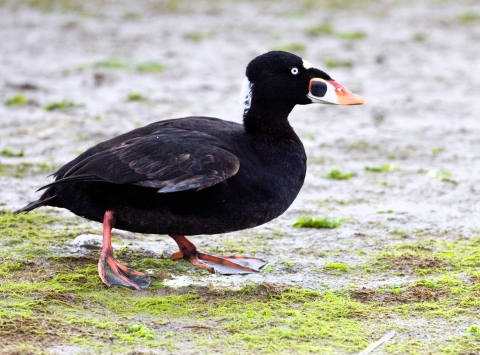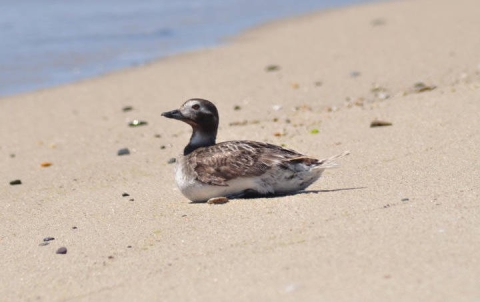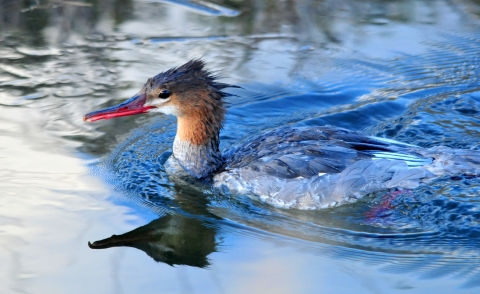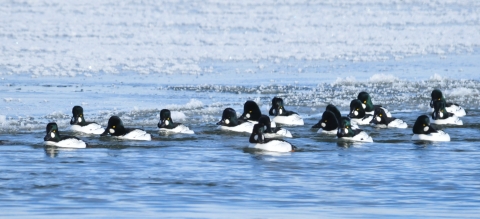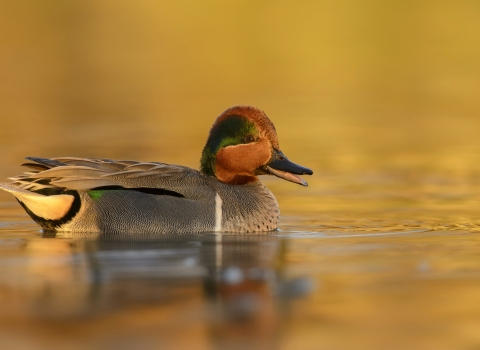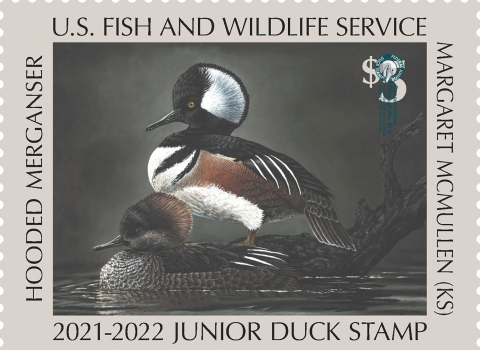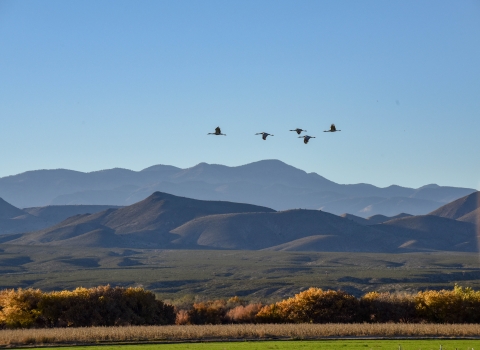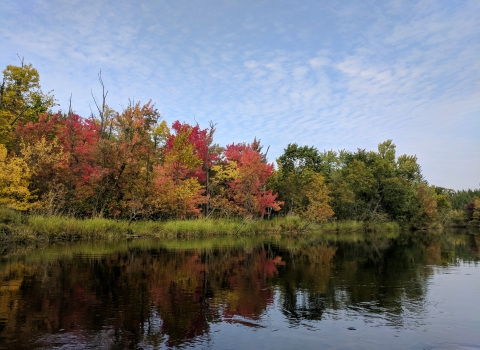Plunging into the icy waters of North America's coasts, sea ducks navigate a world unseen by most. Despite representing a significant portion of the continent’s duck species, these unique marine birds are among the least understood. Yet, unlike other waterfowl, many sea duck populations have declined, sounding an urgent call for our attention.
Meet the Sea Ducks
Out of the 21 species of sea ducks found around the globe, an impressive 15 call North America home! These birds are divided into several subgroups, including eiders, scoters, goldeneyes, mergansers, the harlequin and long-tailed ducks, and bufflehead. With specialized salt glands, they have become uniquely adapted to thrive in diverse habitats, from glacial lakes and estuaries to tree cavities in boreal forests. Most winter along the northern coasts of the Atlantic and Pacific Oceans and breed further inland across the Arctic tundra and taiga regions. Their beauty and unique behaviors captivate bird enthusiasts and hunters around the world and, for centuries, they have played an important role in the culture and food resources of many Indigenous communities.
Under the Shadow of Success
Over the past several decades, the visionary North American Waterfowl Management Plan and North American Wetlands Conservation Act have helped most waterfowl populations recover. However, sea ducks remain an exception. The 2022 State of the Birds report revealed a concerning 30% drop in their numbers since 1970. Two species – the spectacled eider and the Alaska-breeding population of Steller's eider – have been federally listed as threatened since 1997. Another two – the king eider and black scoter – were identified as “Tipping Point” species that have lost at least half of their population since 1970 and are projected to lose another half in the next 50 years if no action is taken.
Stepping Up for Conservation: The Sea Duck Joint Venture
A significant response to declining sea duck populations is the Sea Duck Joint Venture. Born out of the North American Waterfowl Management Plan in the 1990s, this bi-national collaboration between the U.S and Canada has been championing research and conservation for sea ducks and their habitats across the continent. Through this alliance, we at the U.S. Fish and Wildlife Service join forces with our colleagues from Environment Canada, Canadian Wildlife Service, U.S. Geological Survey, Bureau of Ocean and Energy Management, Ducks Unlimited, Birds Canada, all four Migratory Bird Flyway councils, and others.
Together, the Sea Duck Joint Venture combined over two decades of research data and created the world’s first Sea Duck Key Habitat Sites Atlas. This Atlas identifies 85 of the most important habitats for sea ducks across North America and provides valuable insights about conflicts that could potentially impact the species or their habitats in the future. To compliment the Atlas, the Sea Duck Joint Venture has also created an open access interactive data visualization map. This tool has been instrumental in real-world applications, from being incorporated into the National Oceanic and Atmospheric Administration’s App to inform oil spill response and prevention to providing insights in Canada's Marine Spatial Plans for exploratory oil and gas drilling. Together, these resources are not only important to raise awareness of sea duck habitats across their range, but also to help us and our partners prioritize conservation efforts with more informed environmental assessments.
Coast to Coast
From the remote coasts of Alaska to the shared Salish Sea of the Pacific Northwest to the historic Nantucket Sound off the coast of Massachusetts, the key habitat sites identified for sea ducks are remarkably diverse, yet similar in the threats they face.
Alaska
Two sites identified in Alaska are considered the top priorities for their importance to sea ducks protected under the Endangered Species Act. The Yukon-Kuskokwim Delta Key Habitat Site within the Yukon Delta National Wildlife Refuge was found to be one of two primary breeding habitats for the threatened spectacled eider in Alaska and has since been designated critical habitat for the species. This area is also home to one of the largest river deltas in the world.
South of the Yukon Delta area, on the north side of the Alaska Peninsula, the Izembek Lagoon resides within the Izembek National Wildlife Refuge. This remote area was designated critical habitat for the threatened Steller’s eider, as they especially rely on the lagoon during their molt, winter, and spring migration. Izembek is also remarkable in that it contains the largest eelgrass bed in the world, an ecosystem that supports the food sea ducks need during their non-breeding season. It is also important habitat for black scoters, red-breasted mergansers, and long-tailed ducks. As a low-lying habitat along the coast, these sites are particularly sensitive to climate change climate change
Climate change includes both global warming driven by human-induced emissions of greenhouse gases and the resulting large-scale shifts in weather patterns. Though there have been previous periods of climatic change, since the mid-20th century humans have had an unprecedented impact on Earth's climate system and caused change on a global scale.
Learn more about climate change impacts like sea level rise and storms that impact fresh water many sea duck species need to rear their young.
Salish Sea
Further south, in between British Columbia and Washington lies the Salish Sea, a dynamic network of coastal marine waters. The four major water bodies along this network form a hotspot of biological diversity throughout the entire year. Habitats in these waters are especially important to sea ducks along the Pacific Flyway, including at least 11 species that rely on the area for wintering. Here, sea ducks may be vulnerable to habitat loss due to urban development, loss of prey due to climate change, ocean acidification, pollution, disease, harmful algal bloom events, and disturbance from shipping and recreational boating vessels.
Nantucket Sound
All the way over on the East Coast, Nantucket Sound is the winter home to hundreds of thousands of sea ducks, particularly long-tailed ducks, common eiders, and all three North American scoter species. On this side of the continent, seagrass beds provide critical seasonal habitats and support foods they rely on during migration. All along the Atlantic coast, the key habitats for sea ducks are vulnerable to human development impacts that can alter the delicate ecosystem balance in the water, which can result in declines of these critical seagrass meadows. Similar to the sites along the Pacific Coast, these habitats are also threatened by increased commercial shipping and boating activity, pollution, and climate change impacts like sea level rise.
Moving Forward
Despite the many challenges sea ducks and their habitats face, hope prevails. Decades of research by the Sea Duck Joint Venture and others are showing us how preciously unique and particularly vulnerable these species are. Identifying the most important habitat sites for these vulnerable birds in the Sea Duck Key Habitat Sites Atlas has been a huge step in the right direction. Open access to the Atlas and the interactive map provides an opportunity for more targeted conservation efforts on a continental scale. Through the power of international collaboration, the realities of sea ducks in North America are unfolding and their value is gradually being recognized.
To learn more about sea ducks, visit the Sea Duck Joint Venture website, where you can download the entire Atlas or individual site narratives from regional sections.
